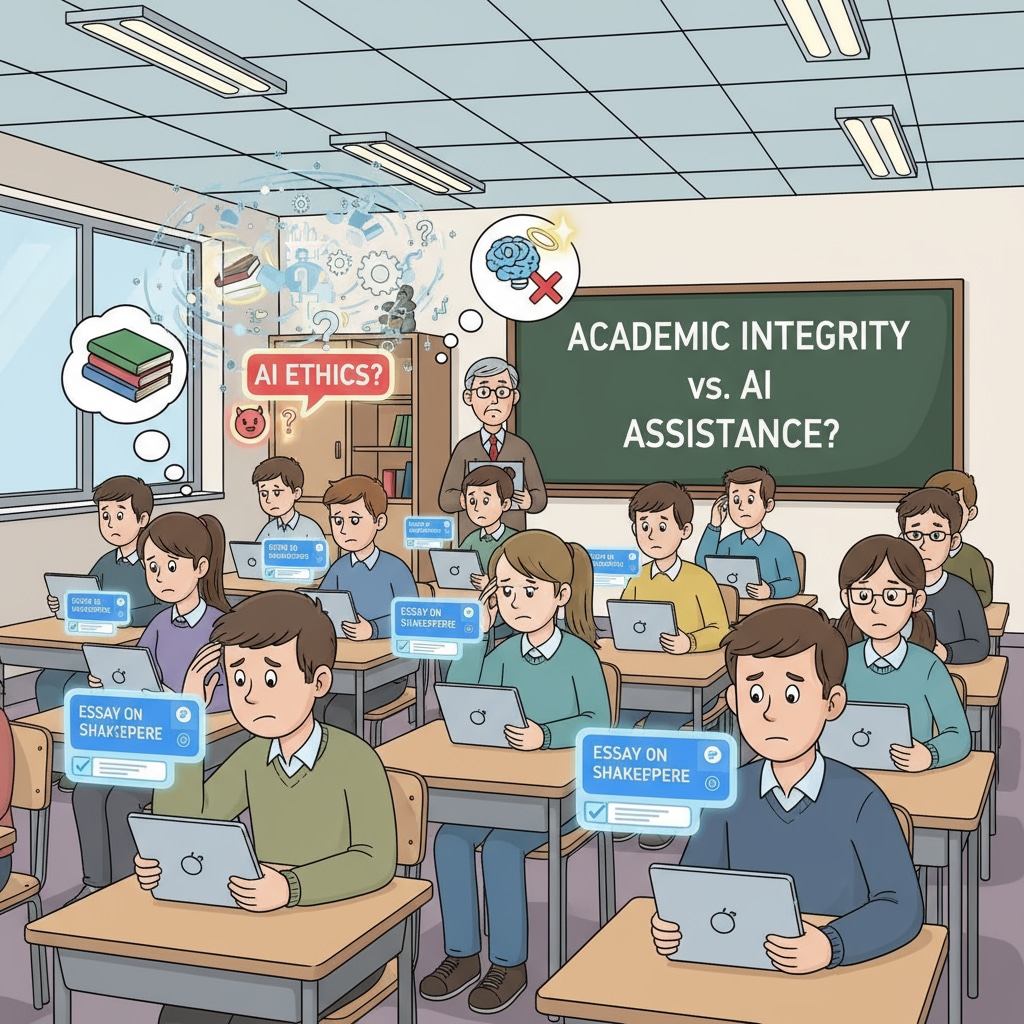The digital age has introduced a new set of challenges to the realm of education, particularly in the context of K12 learning. Academic integrity, ChatGPT use, and moral dilemmas are now at the forefront of discussions among educators, students, and parents. With the widespread availability of AI tools such as ChatGPT in the K12 education landscape, students are grappling with unprecedented ethical decisions regarding their academic work.

The Rise of AI in K12 Education
AI has rapidly become an integral part of modern education. Tools like ChatGPT offer quick answers, essay writing assistance, and the ability to solve complex problems. For K12 students, these features can seem like a shortcut to academic success. For example, a student struggling with a history assignment can ask ChatGPT to summarize historical events or write a short essay. This ease of access has led to a significant increase in the use of AI in academic tasks. However, this convenience comes with a price – the potential erosion of academic integrity.
The Moral Dilemmas Faced by Students
When students use AI to complete their academic work, they often find themselves in a moral bind. On one hand, they are under pressure to perform well academically. The competitive nature of the education system and the fear of failure can drive them to seek help from AI. On the other hand, they are aware that using AI inappropriately is unethical. Many students experience guilt when submitting work that has been significantly assisted by AI.

This moral conflict is a clear indication of the complex situation that AI has created in the academic environment.
According to Academic integrity on Wikipedia, academic integrity is the foundation of a legitimate education. By using AI to cheat, students are not only undermining their own learning but also devaluing the educational system. It is a violation of the principles of honesty, trust, and responsibility that are essential in an academic setting.
The Impact on Academic Development
While AI can provide quick solutions, it does not promote true learning. When students rely too heavily on AI, they miss out on the opportunity to develop critical thinking, research, and writing skills. These skills are crucial for their future academic and professional success. For instance, if a student uses ChatGPT to write every essay, they will never learn how to analyze a topic, organize their thoughts, or express themselves effectively in writing. In addition, students may become dependent on AI, lacking the confidence to solve problems independently.
Strategies to Balance Technology and Integrity
Educators and schools need to take proactive steps to address this issue. Firstly, they should educate students about academic integrity and the proper use of AI. Clear guidelines should be established regarding what constitutes acceptable and unacceptable use of AI in academic work. Secondly, teachers can design assignments that are more challenging and require students to demonstrate their own thinking and effort. This could involve projects that demand hands – on research, group discussions, and in – depth analysis. According to Education on Britannica, a well – designed curriculum can help students understand the importance of integrity while also embracing technological advancements.
In conclusion, the use of AI in K12 education has presented a unique set of challenges related to academic integrity, ChatGPT use, and moral dilemmas. It is essential that all stakeholders – students, educators, and parents – work together to find a balance between leveraging technology for educational benefit and maintaining the integrity of the academic system. By implementing appropriate strategies, we can ensure that students receive a quality education that fosters both learning and ethical behavior.
Readability guidance: The article uses short paragraphs and lists to summarize key points. Each H2 section provides relevant details. The proportion of passive voice and long sentences is controlled. Transition words are used throughout the text to enhance flow.


